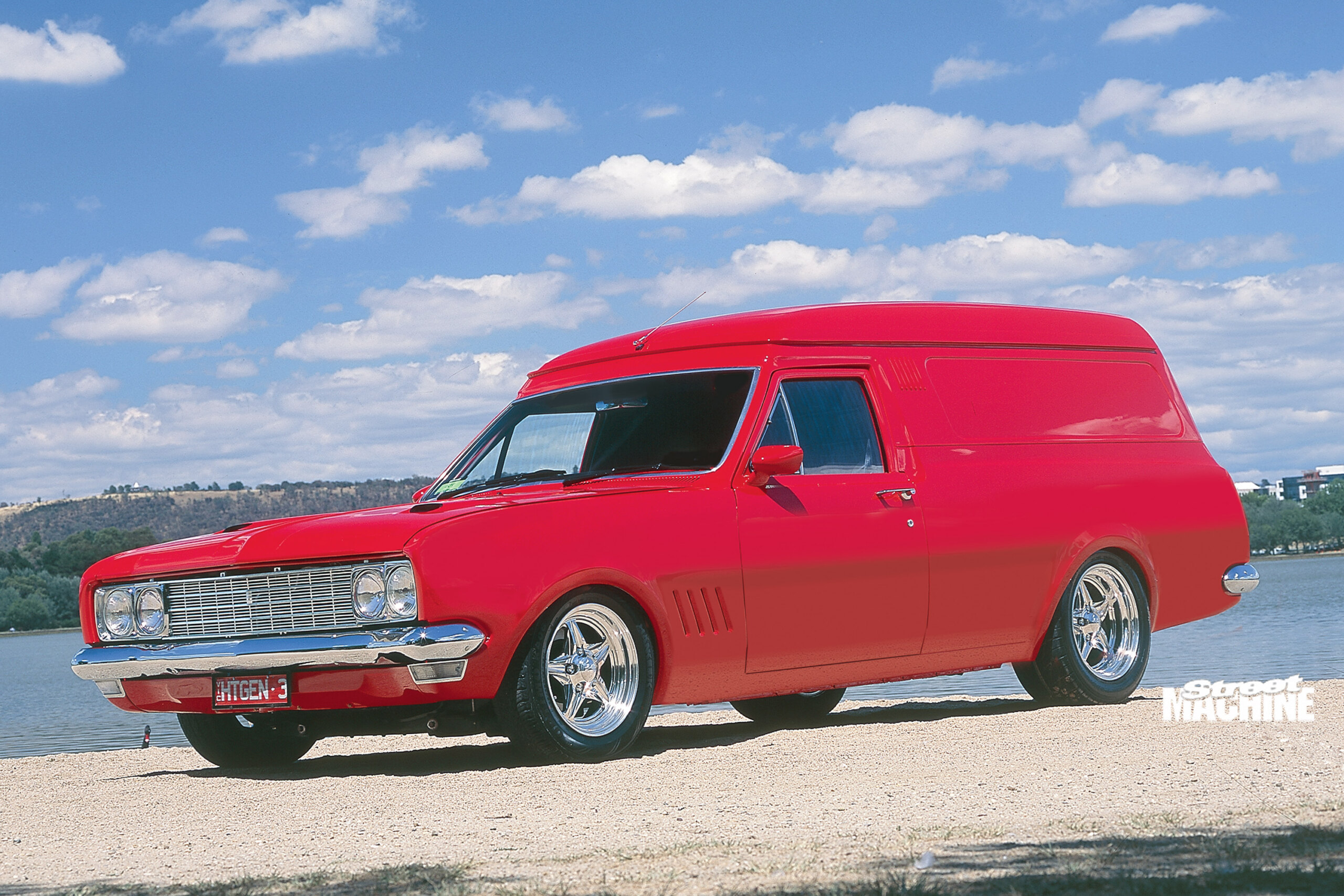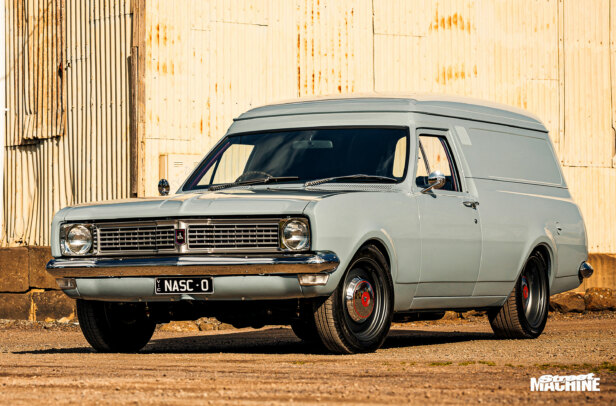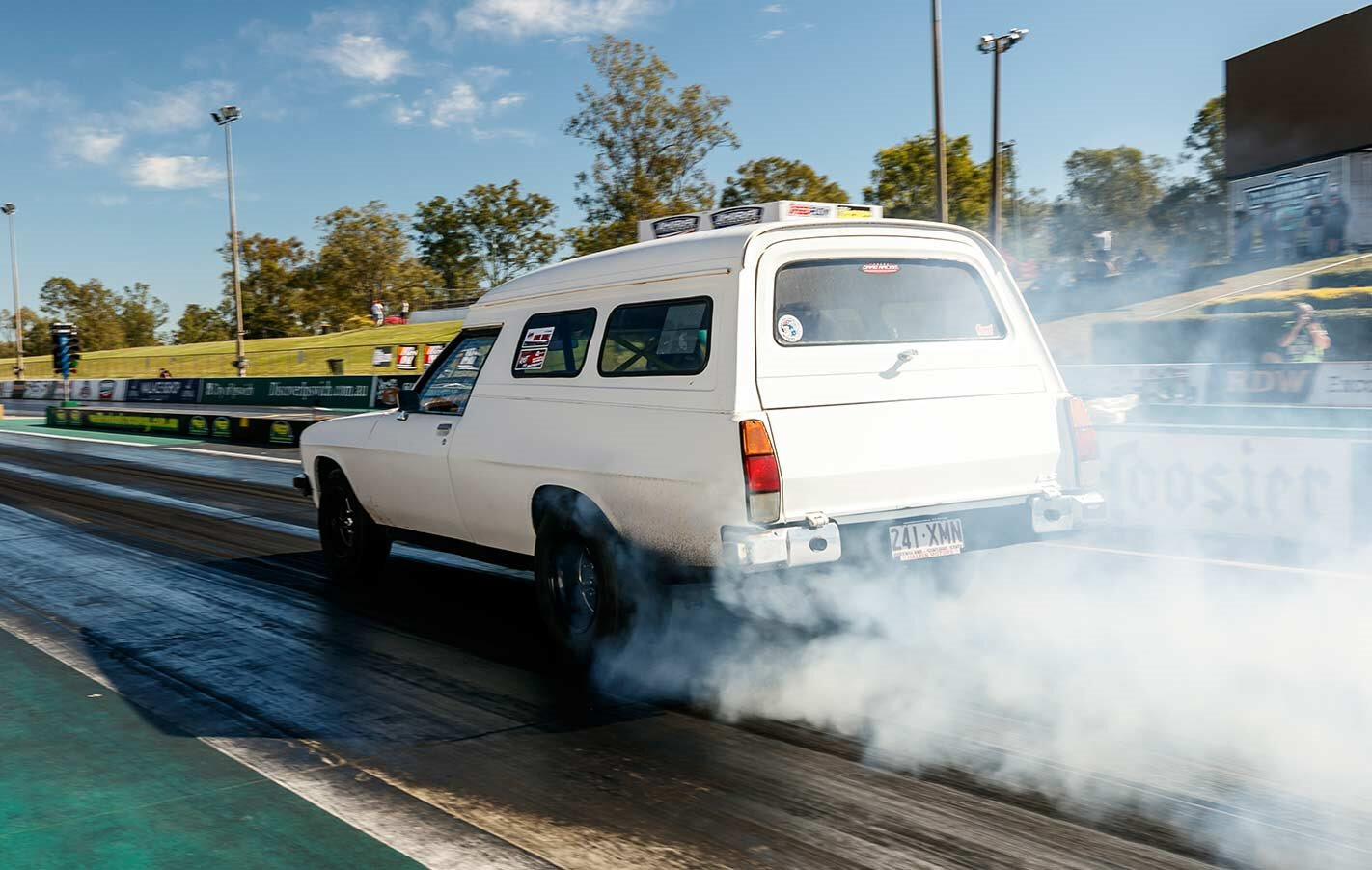First published in the July 2004 issue of Street Machine
Goddamn! Is it really five years since the launch of the Gen III? Five years since I accepted the death of my old mate, the mighty Australian-made Holden V8? Five years since I stared into a pre-production WH Statesman engine bay and contemplated the future of Australian performance? Jeez, time flies.
Now, as it passes its fifth birthday on Aussie roads, we’re starting to see the Gen III pop up in transplants, being slung into everything from race cars to 4WDs.

“The very first Gen III transplant I did was in a 1957 Chev stretch limo from WA,” explains Con Soldatis whose business, Castle Auto Electrics (CAE) in Castlemaine, Vic, specialises in building transplant wiring harnesses and exhaust systems. Hell, I saw that Chev on the top of the hill at Bathurst last year.
“That’s the one!” says Con. “The owners love it. It got 10 litres per 100 across country, full of blokes, blankets and piss. I must’ve sold 30 or 40 looms for LS1 transplants by now. Hot rods, early Commodores, a ’64 Corvette — a heap of things.”
Con bought the HT van with the intention of installing a Gen III but his history with the car goes back further than that.
“I first bought it in 1981, I think,” Con recalls. “It used to run at the drags. I sold it, and eventually I got it back four or five years ago. It was a good straight body and it didn’t have any windows. All the flares had been done to look original.”
Flares? They’re so good you don’t notice them.

“We wanted a project car and this was a good start. I could see that the Gen III was going to be the Next Big Thing and this shape Holden really is a favourite of mine.”
It had rust in the floors, and the subframe was stuffed. That didn’t matter much to Con and his team. After a thorough strip, the floors were replaced (“I knew I was going to need floor mods to fit the Gen III and a six-speed anyway”) and a new subframe and four-light front sheet-metal went on.
Con and the crew added a Commodore fuel filler door, a centre high-mount brake light and a wagon rear bumper after some sheet-metal mods to delete the panno’s standard spare wheel door. Tingay’s Smash Repairs sprayed everything in Holden Sting Red.

Of course, the real focus — this car’s reason for being — is the all-alloy engine transplant. For Con, fitting the ex-Camaro unit was a time of trial and error, all with the intention of developing the processes and products required to help other enthusiasts with transplants. First challenge — as it is with most engine swaps — was the sump.
“The Camaro engine has a sump that goes all the way to the back,” says Con. “We had to put a hump in the sump like an HK 308 or 327. What we found with the alloy sump was that it would warp. The first one twisted about a quarter of an inch! We’ve organised with Jet Hot to heat-treat the sumps while they’re in the jig. They come out dead straight.”
In the HT, the sump runs over a modified Commodore rack and pinion system which mates to the original column, giving far better turning than the HT steering box.

Other hardware head-scratches include the wiper motor, gearbox crossmember (from Castlemaine Rod Shop) and the floor, which was fitted with a necessary larger tunnel when the rust sections went in. Aussie Desert Cooler made up a four-core radiator with plumbing to suit the Gen III’s coolant pipes. With a pair of 12-inch thermos controlled by the PCM, there are no problems even on 40-degree days. As with other aspects of the conversion, CAE used the HT panno project to design a ‘transplant’ exhaust that is now sold to customers.
Despite being fitted in the forward-most of its three factory positions, the T56 shifter still sits a little further back than you’d expect. It required the Premier bench seat to be notched, to give the shifter some real estate. Behind it all is a Ford nine-inch fitted with VN Commodore discs that back up VT fronts. The diff ratio is a street-sweet 3.7:1 which, while lower than a Commodore’s 3.45, is the same as fitted by HSV. It gives the Gen III a leg-up for its climb into the power curve and with the lesser weight of the HT’s shell compared to the heavier VT, helps the driveability of the Gen III considerably.

“At 110km, it’s doing about 1750 revs,” says Con. With 5.7-litres of alloy V8 and a six-speed, the HT gets 500kays to a tank and goes hard.
The management system is based on factory Camaro hardware and software, both modified by CAE. The wiring is a CAE special, to mate the 1990s Camaro PCM harness to the 1960s Holden loom, and some features not required for engine conversions (such as vehicle anti-theft functions) have been written-off the PCM. The fat Camaro tune has been tweaked by CAE to make it run a bit crisper. The fuel system is Gen III replica, dunked into the HT’s fuel tank with a CAE conversion package.

The instruments are quite straightforward, using VDO electronic units. “The VDO speedo virtually falls into the HT/HG dash,” explains Con. “It’s easy to programme — we have a 1km stretch of road out of town that we use to calibrate. It’s within a couple of kilometres an hour. Why would you stuff around with an old mechanical speedo? You can’t with engines like this, anyway. It’s all simple electronics.”
Putting the polish on what is really a complete engine transplant to-do list is a simple re-trim of the cabin in black and red vinyl by Castlemaine local Wayne Watts. After all, it is Con’s work truck.

And although it’s all laid out bare here for all to see, it’s really the stuff you don’t see that gives this car its appeal.
Con Soldatis
1970 HT Holden van
| Colour: | Holden Sting Red |
| DONK | |
| Engine: | Chev/Holden LS1 |
| Internals: | Stock |
| Management: | Camaro, modified by CAE |
| Exhaust: | CAE custom-tailored system |
| Radiator: | Aussie Desert Cooler four-core |
| Other stuff: | Custom sump and crossmembers to suit transplant |
| DRIVELINE | |
| Gearbox: | T56 six-speed |
| Tailshaft: | Fabricated to suit |
| Diff: | Ford nine-inch 3.7:1 ratio |
| SPRINGS & BRAKES | |
| Springs: | Pedders coils lowered two inches (f), three-inch lowered rear leaf springs |
| Shocks: | Pedders gas |
| Brakes: | VT Commodore twin-piston front calipers and rotors, VN Commodore rear, HT master cylinder |
| STEERING | Rack and pinion steering conversion based on VB Commodore, Commodore stud pattern |
| BODY | Wagon rear bumper, deleted spare-wheel door, flared guards, four-light Premier front, Commodore fuel filler, centre high-mount brake light |
| ROLLING STOCK | |
| Wheels: | 15×7(f), 16×9.5(r) Billet Specialties |
| Tyres: | 185/65(f), 255/50(r) |



Comments